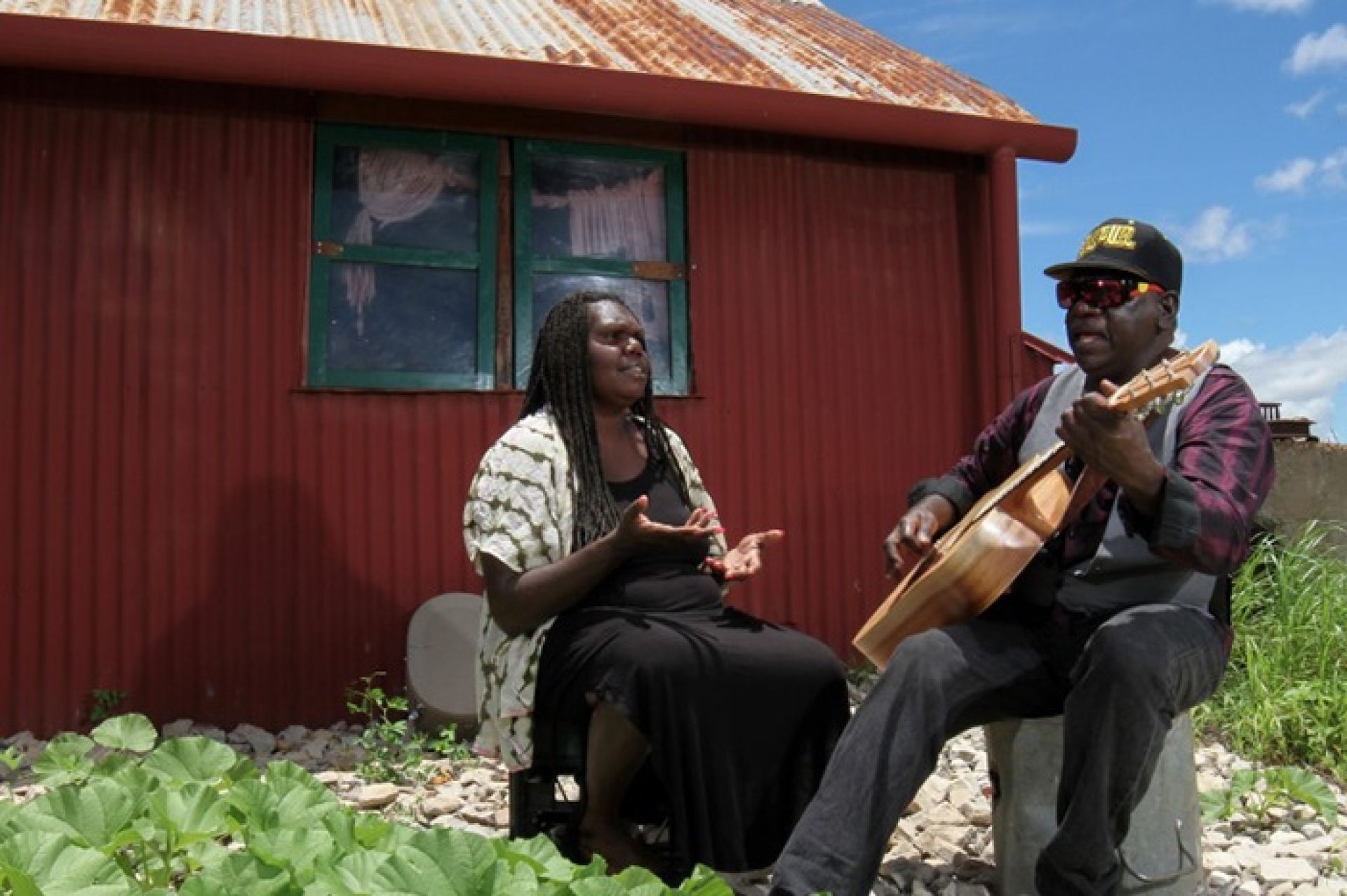

As a part of this year’s Something Somewhere Film Festival, languages from Central Australia were put front and centre in a new program. With the help of Arrernte elder MK Turner, the program was named Arrpenhe-nthenhe – meaning ‘where’s the other one?’.
Dr Margaret Carew, a linguist at Batchelor Institute’s Centre of Australian Languages and Linguistics (CALL), worked in curating Arrpenhe-nthenhe, which was devoted entirely to Indigenous Language films from the heart of Australia.
It is a project of the Arrernte Language Office at the Desert Peoples Centre, in partnership with the Something Somewhere Film Festival. It is supported by CALL at Batchelor Institute and the Australian Government’s Indigenous Languages and Arts program.
Arrpenhe-nthenhe screened films at a festival session at the Alice Springs Cinemas. The eight films featured in this section were in Arrernte and Eastern Arrernte, Warlpiri, Mudburra, Kriol, Alyawarr, Ngaanyatjarra, Pitjantjatjara and English. Other films appeared as shorts before features in other sessions, and there were a number of films programmed into the Secret Swag screenings in the festival lounge across the weekend.
Highlights of the program included the launch of Warlungka, about the father-daughter music duo from the Barkly region, Rayella, who have been touring the country as the support for Violent Femmes. As well as the premiere of CAAMA’s songlines project, Artnwer: Desert Dingo.
It also included Mother Tree, directed by Akeyulerre, Maya Newell and Blake Kendall. This is a dreamtime story about a dangerous dingo that wants to eat two children, stalking them as they hunt for animals and collect plants on their country. The film is one of a series made by and for Arrernte families through Akeyulerre, the Arrernte Healing Centre in Alice Springs.
One short film is about the concepts of ngaltunytju ‘compassion’ and mukulya ‘love’ as described by Maringka Burton, a traditional healer. Filmed and edited by Rhett Hammerton.
Pangkupirri is about a group of women visiting a waterhole on Marrkilyi’s country near Tjukurla called Pangkupirri. The story is simple, bringing together the familiar elements of family, place and travel. It is told in the classical Ngaanyatjarra style of mirlpa – using a story wire to mark the rhythmic beat of the story and to create symbols and tracks in sand.
In the film Ngapa yawulyu Warlpiri women sing, dance and paint up with some of the yawulyu that make up the Ngapa ‘rain’ song series.
Kardiyarlu kangurnu takes us into the memories and imaginations of Warlpiri and Anmatyerr elders as they talk about the things that came with kardiya ‘europeans’. Starting out in the sober style of the oral history interview, the screen soon pops with hilarious animations of a child’s shock at seeing a white woman, speculations about the source of tinned meat and experiments in taste testing rabbits for the first time.
Back in the 1950s at Santa Teresa mission, young men wishing to marry would build a house from local stone, to live in with their new wife. The Stone Houses film involved the digitising of footage taken by mission priest, Father Tom Dixon, who documented scenes of everyday life in the village. These recordings have recently been shown to the elders who once lived, worked and played in the village of stone houses, a profoundly moving encounter.
The Arrpenhe-nthenhe took place on Saturday April 22nd at the Alice Springs Cinema. Find out more information on the Something Somewhere website.
